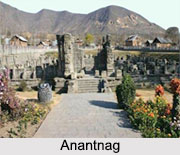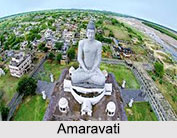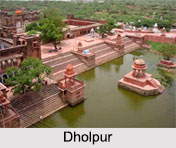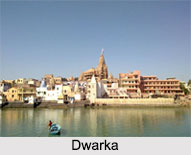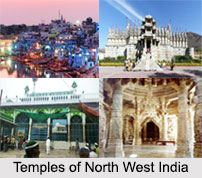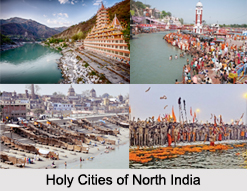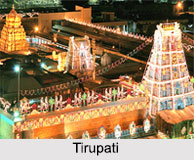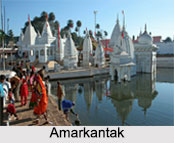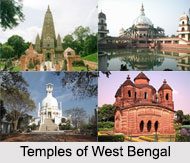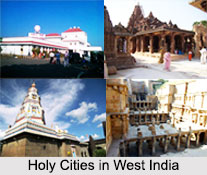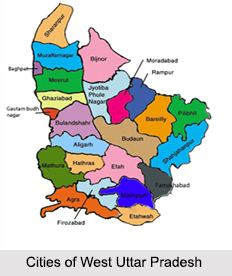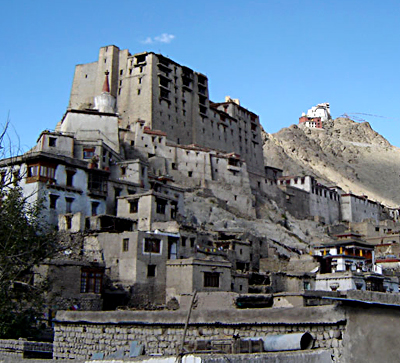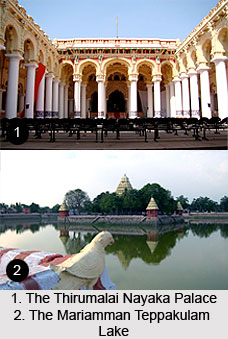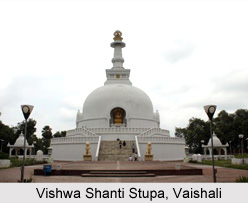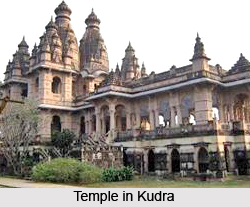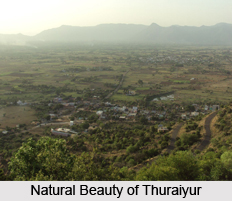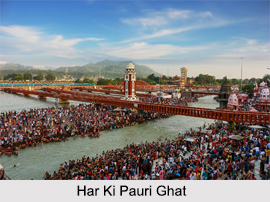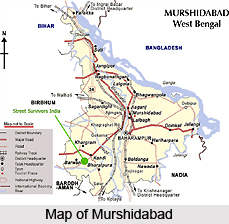 Murshidabad is a city in Murshidabad district of West Bengal state in India. The city of Murshidabad is located on the southern bank of the Bhagirathi, a tributary of the Ganges River. It was the capital of undivided Bengal during the Mughal rule. The Nawabs of Bengal used to rule Bengal from this city. It is still inhabited, and musch of the glory and splendour of the days gone by are seen in the ancient ruins and historical monumenty still existing in the city. The city today is a centre for agriculture, handicrafts and sericulture. The famous Murshidabad Silk manufactured here is much in demand for making saris.
Murshidabad is a city in Murshidabad district of West Bengal state in India. The city of Murshidabad is located on the southern bank of the Bhagirathi, a tributary of the Ganges River. It was the capital of undivided Bengal during the Mughal rule. The Nawabs of Bengal used to rule Bengal from this city. It is still inhabited, and musch of the glory and splendour of the days gone by are seen in the ancient ruins and historical monumenty still existing in the city. The city today is a centre for agriculture, handicrafts and sericulture. The famous Murshidabad Silk manufactured here is much in demand for making saris.
History of Murshidabad
Murshidabad was a town and district of British India in the presidency division of Bengal. It acquired its name in 1704 when Nawab Murshid Quli Jafar Khan changed the seat of government from Dhaka to Maksudabad, and named the latter after himself. In 1716, he attained the title of Nawab (ruler) of the Subah (province) of Bengal, and Murshidabad became his capital. It continued to be the capital under a succession of Nawabs, and also under the British until 1790. It was constituted as a municipality in 1869, which remains to the present day. The city of Murshidabad was the last capital of Bengal before the advent of the British era. Even after the British conquest, Murshidabad remained for some time the administrative headquarters. Even though the criminal and supreme court was shifted from Murshidabad to Kolkata initially, the criminal courts were brought back to Murshidabad in 1775.The town continues to be the residence of the Nawab, who ranks as the first nobleman of the province with the style of Nawab Bahadur of Murshidabad, instead of Nawab Nazim of Bengal. The city still bears memories of Nawabs with other palaces, mosques, tombs, and gardens, and retains such industries as carving in ivory, gold and silver embroidery, and silk-weaving. An educational institution is named after the Nawab family.
Geography of Murshidabad
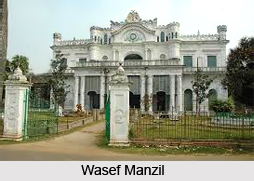 The District of Murshidabad covers a total area of 2143 sq. m. It is divided into two nearly equal portions by the Bhagirathi River, an ancient channel of the Ganga. The region lying to the west consists of hard clay and nodular limestone. Though the general level is high, it is interspersed with marshes and seamed by hill torrents. The eastern half, known as the Bagri, belongs to the alluvial plains of eastern Bengal. There are few permanent swamps; but the whole country is low-lying, and liable to annual inundation. In the North West there are a few small detached hillocks said to be of basaltic formation. The major industry here is that of silk. This was formerly of much importance, but began to decline after a while. It has been revived with government assistance. The city is also well known for producing exotic mango and litchi. There is a narrow guage railway that crosses the district, from the East Indian line at Nalhati to Azimganj on the Bhagirathi, the home of many rich Jain merchants.
The District of Murshidabad covers a total area of 2143 sq. m. It is divided into two nearly equal portions by the Bhagirathi River, an ancient channel of the Ganga. The region lying to the west consists of hard clay and nodular limestone. Though the general level is high, it is interspersed with marshes and seamed by hill torrents. The eastern half, known as the Bagri, belongs to the alluvial plains of eastern Bengal. There are few permanent swamps; but the whole country is low-lying, and liable to annual inundation. In the North West there are a few small detached hillocks said to be of basaltic formation. The major industry here is that of silk. This was formerly of much importance, but began to decline after a while. It has been revived with government assistance. The city is also well known for producing exotic mango and litchi. There is a narrow guage railway that crosses the district, from the East Indian line at Nalhati to Azimganj on the Bhagirathi, the home of many rich Jain merchants.
Demography of Murshidabad
According to the 2001 census, the average population of Murshidabad is close to 40,000. Around 51 percent of the population is made up of males while females make up the rest. The majority population here comprises of Muslims. The average literacy rate of Murshidabad district is 66 percent. Within this, male literacy is 71 percent whereas female literacy is 61 percent. Some Bhumihar Brahmins had settled in Chandipur, Murshidabad during late nineteenth and early twentieth century where they were the local landlords and they are still at the top of the social hierarchy.
Tourism in Murshidabad
Many places of historical interest are located in the city. Most of them are outstanding examples of the legacies bestowed on the city by various ruling dynasties. Of note among the various tourist attractions here is the Hazaarduari Palace, or the Palace of a thousand doors. It was built by Duncan Mc Leod of the Bengal engineers in 1837 as a nazrana(gift) to the Nawab Nizam Humaun Jha, descendant of Mir Jafar. Other places of interest here include the Khushbagh cemetry where the remains of Ali Vardi Khan and Siraj ud Daulah are interred, the Muradbagh palace, the Medina mosque, the Wasef Manzil which is the palace and residence of Nawab Wasef Ali Mirza, the Katra Mosque, Jahan Kosha Cannon, Katgola etc.
